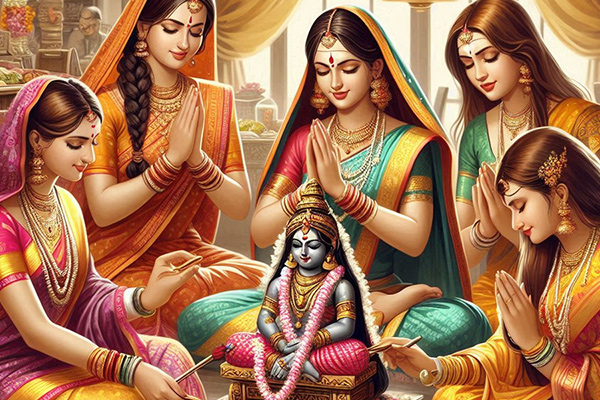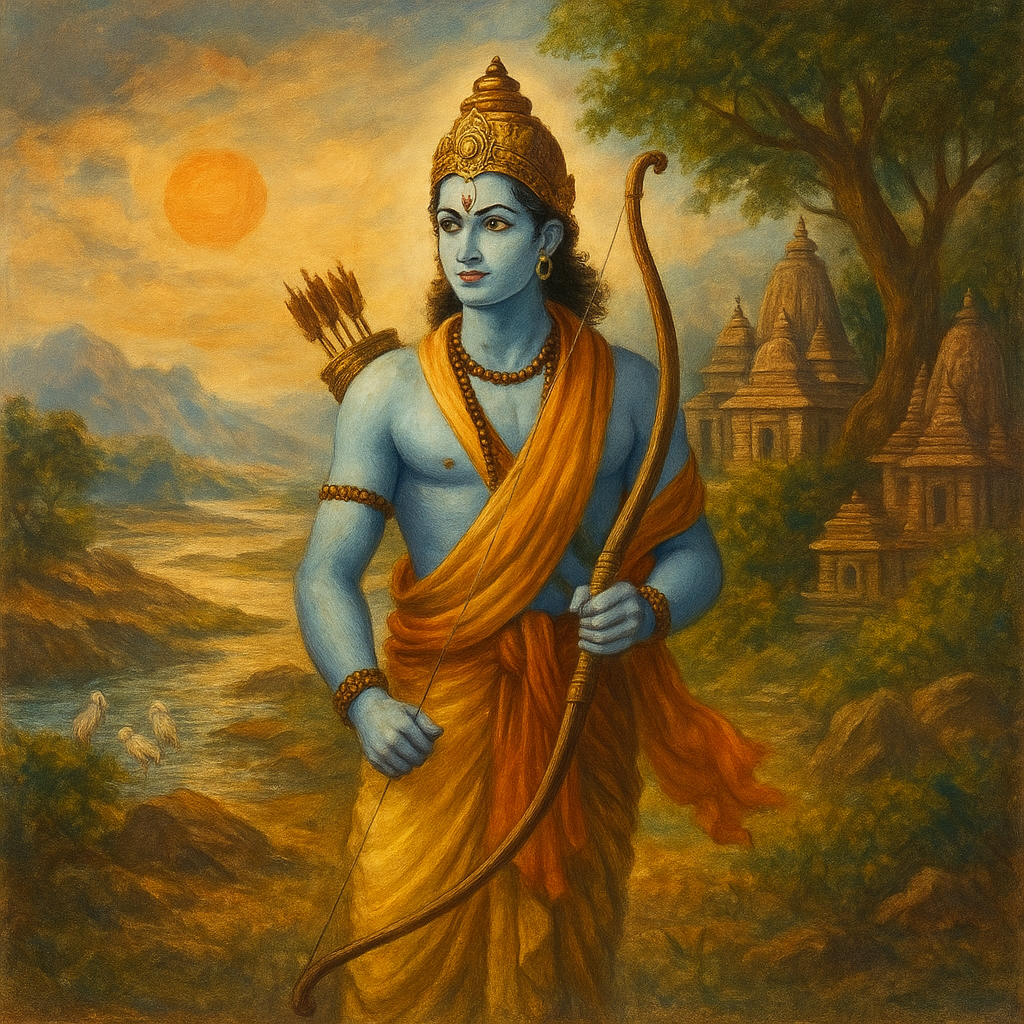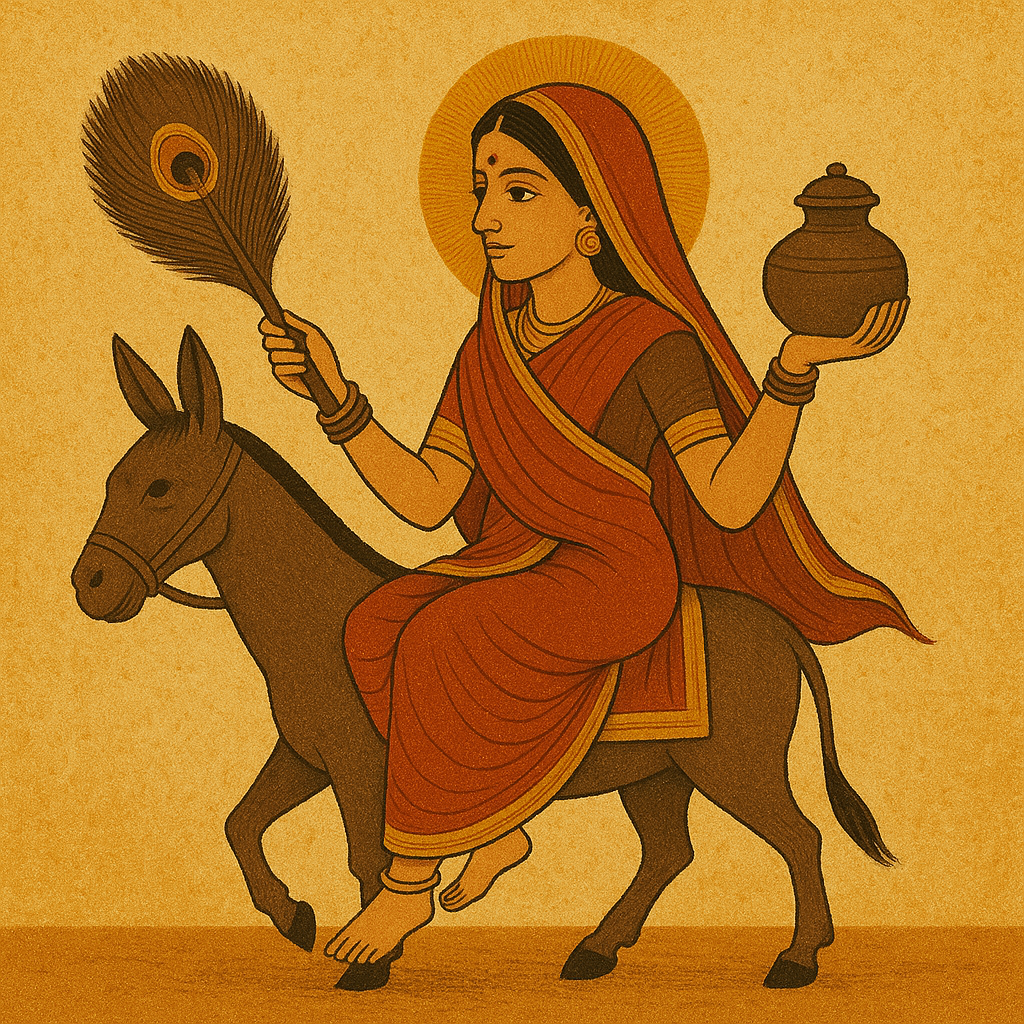
Teej is an Indian festival associated with marriage. During the Teej festival, married women fast, following the Kajari Teej ki vrat vidhi strictly, for the longevity of their husbands and for conjugal bliss. Unmarried girls/women also fast and pray for their desire for a suitable life partner to be fulfilled. This Teej is associated with the devotion of a woman towards her husband.
What is Kajari Teej?

Kajli/Kajari Teej festival is celebrated on the third day of Krishna Paksha (dark fortnight) of the Bhadrapada (Aug-Sept). Kajri Teej is also known as ‘Kajli Teej’ and ‘Badi Teej’. There are various Teej festivals celebrated during the year, Hariyali Teej, Kajari Teej and Hartalika Teej. Along with these, we also have Akha Teej, popularly known as Akshaya Tritiya . The term Teej means the third day after New Moon or Amavasya and Full Moon or Purnima. In the Southern part of India, Kajari Teej falls during Krishna Paksha (dark fortnight) of Shravana, which coincides with the North Indian Kajri Teej day.
Where is kajari Teej celebrated?
Kajari Teej is popularly celebrated with fervour in the Northern states of India, which are Rajasthan, Uttar Pradesh, Bihar, Punjab, and Madhya Pradesh. In Kajri Teej (Kajari Teej), married women worship Goddess Parvati in the form of Teej Mata.
When Is Kajari Teej (Kajri Teej Tithi & Muhurat)
Kajari Teej on Monday, August 31, 2026
Tritiya Tithi Begins - 09:36 AM on Aug 30, 2026
Tritiya Tithi Ends - 08:50 AM on Aug 31, 2026
Kajri Teej Story (Kajari Teej Ki Kahani)

As per the folklore and legend connected to Kajri Teej, it is said that somewhere in central India, there was a huge thick forest named Kajali, ruled by King Dadurai. The people of his kingdom used to sing songs called, Kajali, in praise of the magnificent place. The death of King Dadurai was a pivotal point as, Queen Nagamati, the King’s wife, performed Sati. People of Kajali were saddened by this unfortunate turn of events. They composed songs by improvising Raga Kajari, which were actually songs of separation, and longing for the lover and to date, sung as popular folksongs by women who observe the Kajri Teej, as part of the rituals of the Kajali Teej festival.

The other mythological story/Kajari Teej ki Kahani, associated with this festival is the story of Maa Parvati, who desired marital and divine association with Lord Shiva. So determined was Goddess Parvati that she is said to have performed a strict fast for 108 years along with rigorous penance. Though Lord Shiva is said to be an ascetic, seeing Devi Parvati's dedication and focus, was pleased with her and accepted divine union with her. This divine union between Bhagwan Shiva and Parvati Devi occurred during Krishna Paksha of Bhadrapada month, which later, came to be known as Kajari Teej. It is considered very auspicious to worship Goddess Parvati on this day.
Kajari Teej Rituals?

Kajari Teej is called Badi Teej because it comes a few days after Hariyali Teej, also called Chhoti Teej and is considered the most important Teej for married women. Kajari Teej festival is celebrated in slightly different ways in different states.
The Kajari Teej of Varanasi (Banaras) and Mirzapur are famous, and so is Madhya Pradesh. It is a colorful festival in a way, when married women dress in gorgeous attires, and jewelry, put Mehendi in their hands and feet and dress up beautifully like a bride throughout the day they observe fast, conduct rituals etc.
The ritual of receiving new clothes, jewelry and all other symbolic items of a Suhagan (married women) from the parents to the daughter is also followed on this day.

This festival can be called a celebration honoring womanhood and their dedication and power to ensure their husbands' longevity and prosperity.
It is the monsoon season in India on the Kajari Teej festival, the woman braves heartedly through the rough weather and does all that needs to be done with enthusiasm.
Improvised swings are hung from the trees for women who spend their day swinging, singing folksongs of Kajri of longing and separation, dancing and getting involved in cultural activities and going through the day in the true spirit of the festival.
Bundi in Rajasthan also has a fair with people thronging with family members on this day. Kajri Teej 2026 will see the festivities being celebrated with the same passion, as is done every year.
How To Perform Kajari Teej Pooja? Kajari Teej Puja Vidhi

On the occasion of the Kajari Teej festival, along with observing the most important part of fasting, the Pooja is followed as per rituals. The pooja is done in the evening, with the fall of dusk. Traditionally the married woman may choose to observe it at her maternal home too. However, from state to state, there are variations in the Kajari Teej pooja rituals. We will describe some of the Kajari Teej Pooja vidhi:
- As per one Kajari Teej puja vidhi in some regions, Sattu (gram flour) is an important part of the pooja. The Sattu comes from the parents or maternal home of the married woman. It is mixed with Ghee (clarified butter) and Sugar and then made into a Ball or Pind. This Sattu pind is worshipped.
- The Neem tree, or rather a neem tree twig with leaves, is worshipped in other regions on Kajari Teej Pooja.
- Firstly, Shri Ganesha is worshipped with offerings of flowers, Kumkum, Kajal, Mehendi and specially made food and sweets for the divine.
- With some mud or clay, a small well-like dent is made on the puja platform, and the neem tree twig, which has left, is installed in one corner of this clay well.
- An offering of raw un-boiled milk and water is poured into this well to fill it up.
- The Neem tree/twig is then offered Kum-Kum, Akshat (unbroken rice), Kajal (black Kohl), Mehendi and a red chunri.
- On the four corners of the pooja, the platform applies a bit of Kajal, Kumkum and Mehendi.
- Look into the well filled with milk and water and see the reflection of seven of the puja items like oil lamps made of Sattu ball, Lemon, Cucumber etc.
- The final step is to worship the neem twig with pure intention and hear or read the Kajari Teej ki Vrat Katha to end the Kajari Teej Pooja vidhi.
Kajari Teej Vrat Vidhi (Fasting Ritual)

- The Kajari Teej Vrat Vidhi is followed meticulously in the festive mood. The women get up early in the morning and, after bathing, set the intention or Sankalp to spend the day fasting till the evening.
- At dusk, they perform the Kajari Teej Pooja, listen or read the Kajari Teej ki Vrat Katha and then break the fast.
- Many women choose to keep a dry fast (Nirjala vrat), which means that they abstain from drinking water too, throughout the day.
- Without hearing the recitation of the Kajari Teej ki Vrat Katha, the Kajri Teej vrat is incomplete.
- Maa Parvati and Bhagwan Shiva are worshipped on this day, with Maa Parvati holding prime importance.
- The Neem tree is also worshipped on this day. A variety of delicacies are prepared and relished on the day of Kajari Teej.
Kajari Teej Ki Vrat Katha

In a village lived a poor Brahmin whose wife was observing the Kajari Teej. Since his wife had no one from her maternal home who would give her the Sattu (as per rituals) and as Sattu forms an important part of the Kajari Teej pooja, the wife of the Brahmin asked him to get Sattu for her to do pooja rituals.

The evening had already set in, and the Brahmin told his wife that he did not know where to get the Sattu as he has no money and how will he get it at that hour. His wife insisted that he should somehow get it from somewhere as it was important. The Brahmin had no other way but to go out searching for Sattu but found it nowhere.
Wondering how he could get Sattu to please his wife, he saw a grocery shop and secretly entered. Being an honest and an introverted man, he couldn't ask the shopkeeper directly to give him Sattu with no or less money. He sat there waiting for other buyers to leave. Meanwhile he dozed off and the shopkeeper didn't notice him and left. After some time, the Brahmin woke up, trying to find his way out of the shop. And as he was about to leave, he was caught by the shop owner's servant, who thought he was a thief.

Hearing the commotion, the shop owner, who was also a moneylender, came to see what was happening. On seeing the frightened Brahmin, he asked him what he had stolen. The Brahmin confessed that he was a poor man and told him why and what he had done. Saying his wife asked for Sattu for the Teej Puja, and that he has no intention to steal. Truly enough, when the servant of the shop owner checked what the Brahmin was carrying, it was found to be true.
The shopkeeper understood that the Brahmin had done whatever he did to please his wife. The moon had already risen in the sky by that time, and he had to go home. The money leader/shop owner told the Brahmin that from that moment onwards, he would consider the Brahmin's wife, as his sister. So as is the tradition of Kajari Teej, the shop owner not only gave the Sattu but also gave new clothes, ornaments, kajal, mehendi and a good amount of money.

The Brahmin returned home with the Sattu and all the things the shop owner had given. His life changed into a prosperous and happy life. The Kajri Teej observance also can change the life of the people observing it to that of prosperity and abundance.
Significance or Importance of Kajari Teej:

Kajari Teej, also known as Kajali Teej or Badi Teej, is a festival celebrated in the Indian state of Rajasthan, as well as in some other parts of North India. The festival falls on the third day of the dark fortnight of the Hindu month of Bhadrapada (August/September).
Kajari Teej is primarily a festival celebrated by women, who observe fasts and pray for the well-being and long life of their husbands. Married women dress up in colorful traditional attire, apply henna (mehndi) on their hands, and participate in various rituals and festivities.
One of the key features of Kajari Teej in Rajasthan is the singing of traditional folk songs known as 'Kajari.' These songs are typically sung in praise of the monsoon season, celebrating the joy and beauty of nature. Women gather in groups to sing these songs, which are often accompanied by dance and music, creating a festive and joyous atmosphere.
In Rajasthan, Kajari Teej holds special significance as it coincides with the beginning of the agricultural season when farmers start sowing their crops. The festival is seen to invoke the blessings of the rain god and ensure a bountiful harvest. Women offer prayers to the goddess Parvati, seeking her blessings for a happy and prosperous married life.
Overall, Kajari Teej is a cultural celebration that brings communities together, strengthens familial bonds, and honors the beauty of nature and the agricultural traditions of the region.
Other Significant Things Which Can Be Done on Kajri Teej 2026 Are:
One can perform a
Shiva Puja
, which is highly auspicious during Shravan Maas.
One can wear
Rudraksha beads
as Kantha, bracelets and rings (men and women).
Worshipping a Shiv Linga is highly auspicious. One can worship a
Shiva linga
at home also.
One can install a
Shiva idol
at home and pray to Him for health, happiness and harmony in life.


-in-Astrology.jpg)






.jpg)




Dolat kumar
|August 22, 2024
Jo (swing) jhola Hota hai Teej ka din Jo Kasi tree me Jo bahadha jata hai or us me salheliyan (female friends) jhole khati hai wo kis chez ki nashani hai or kyoun hota hai....???